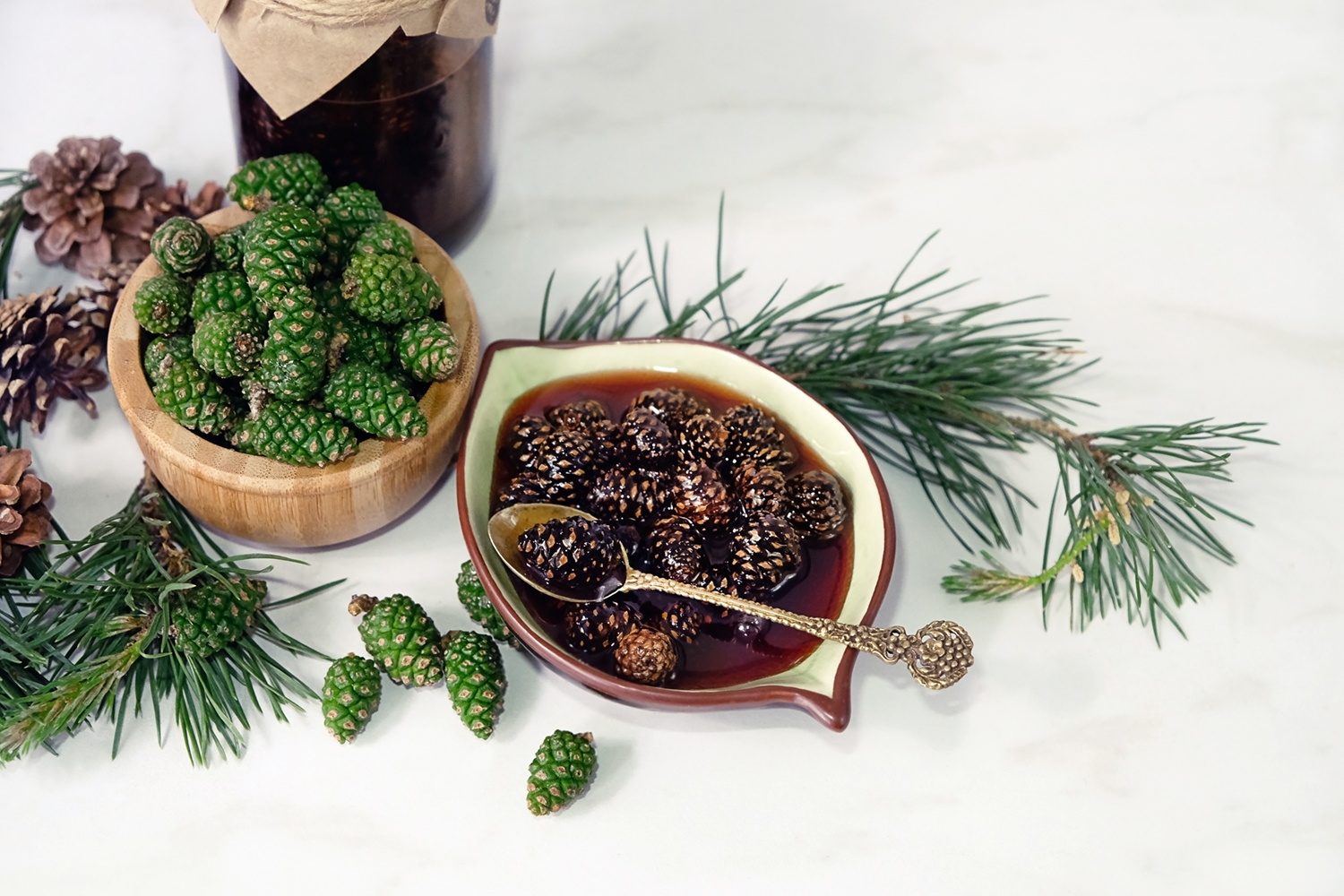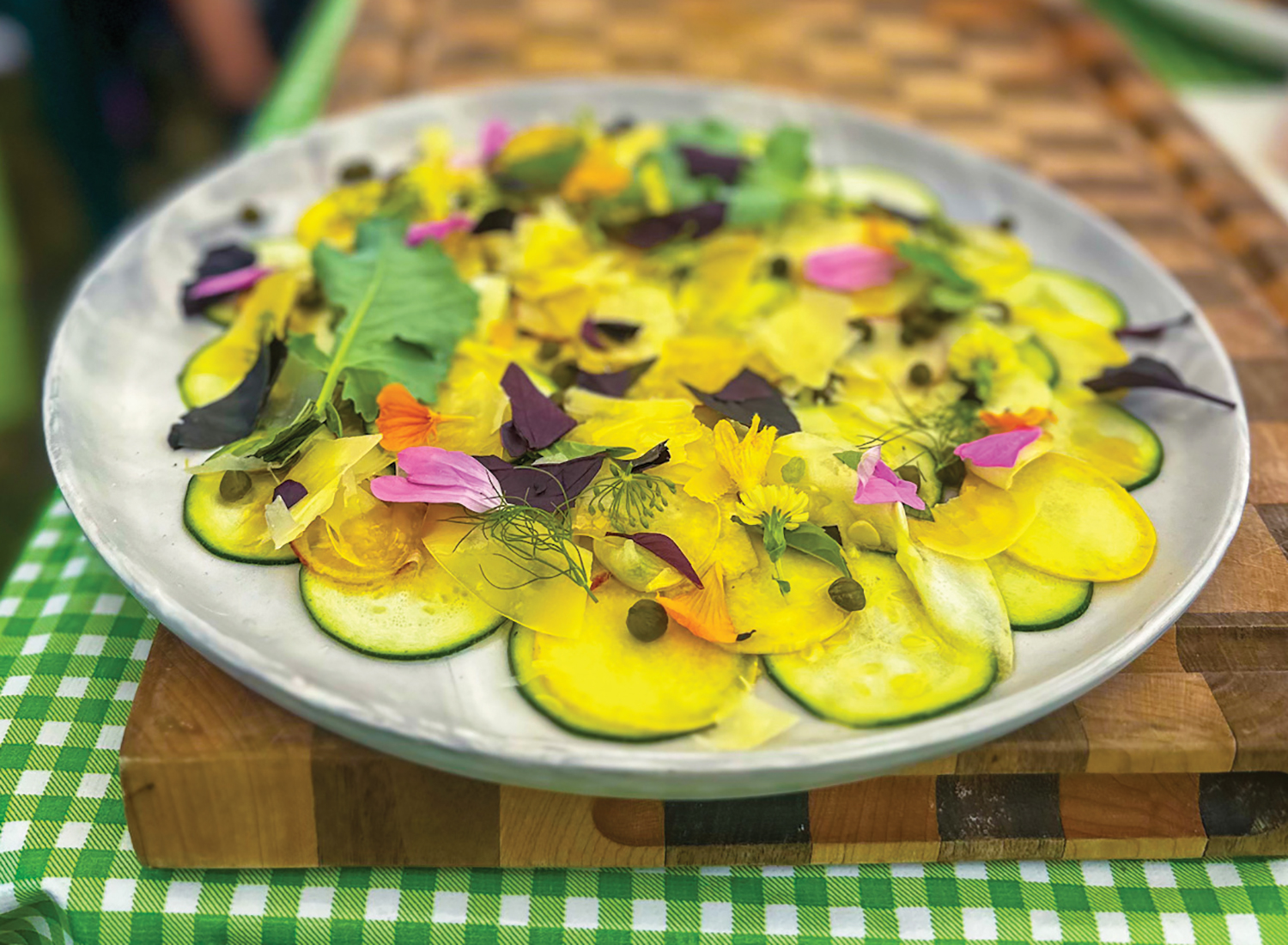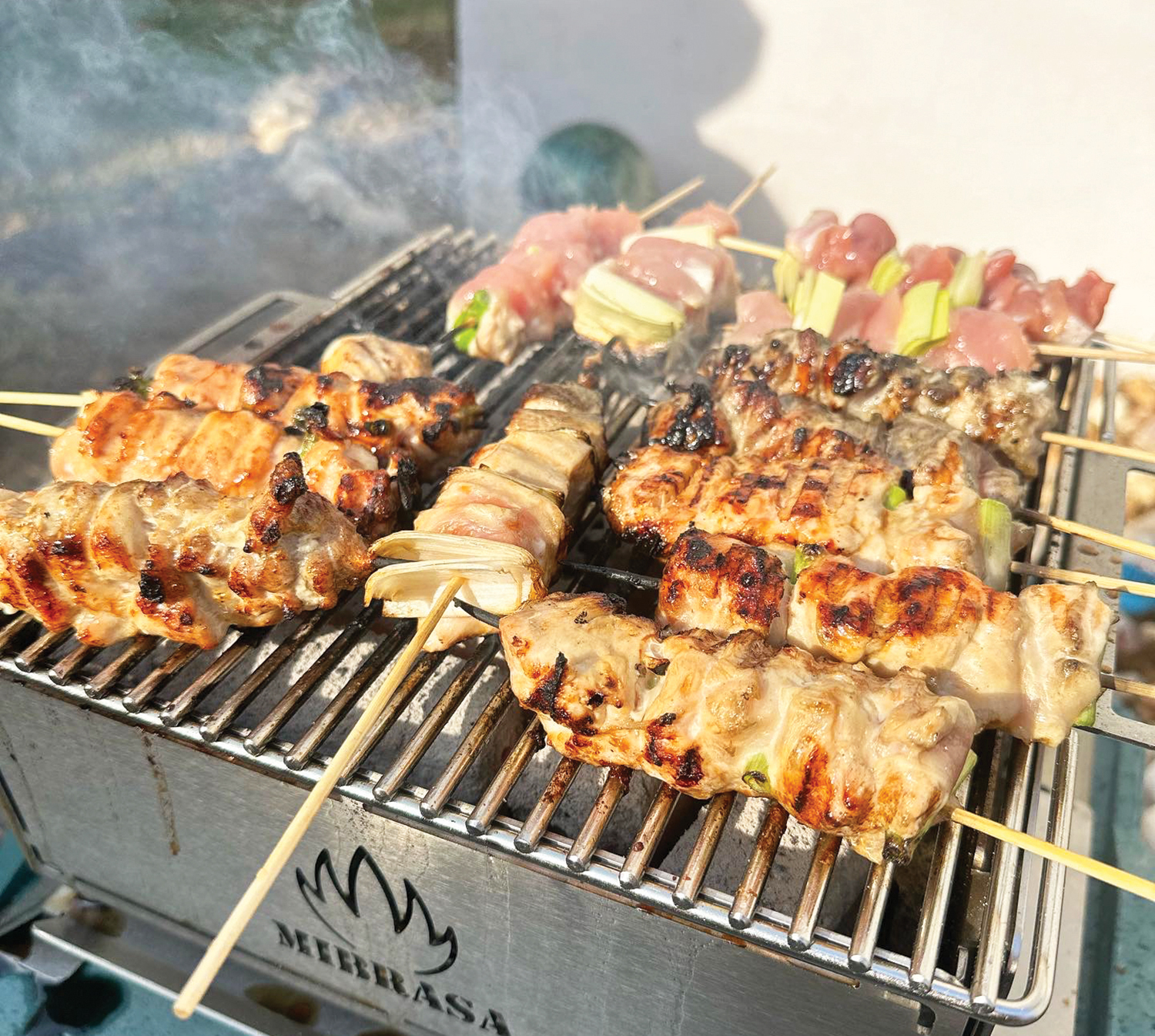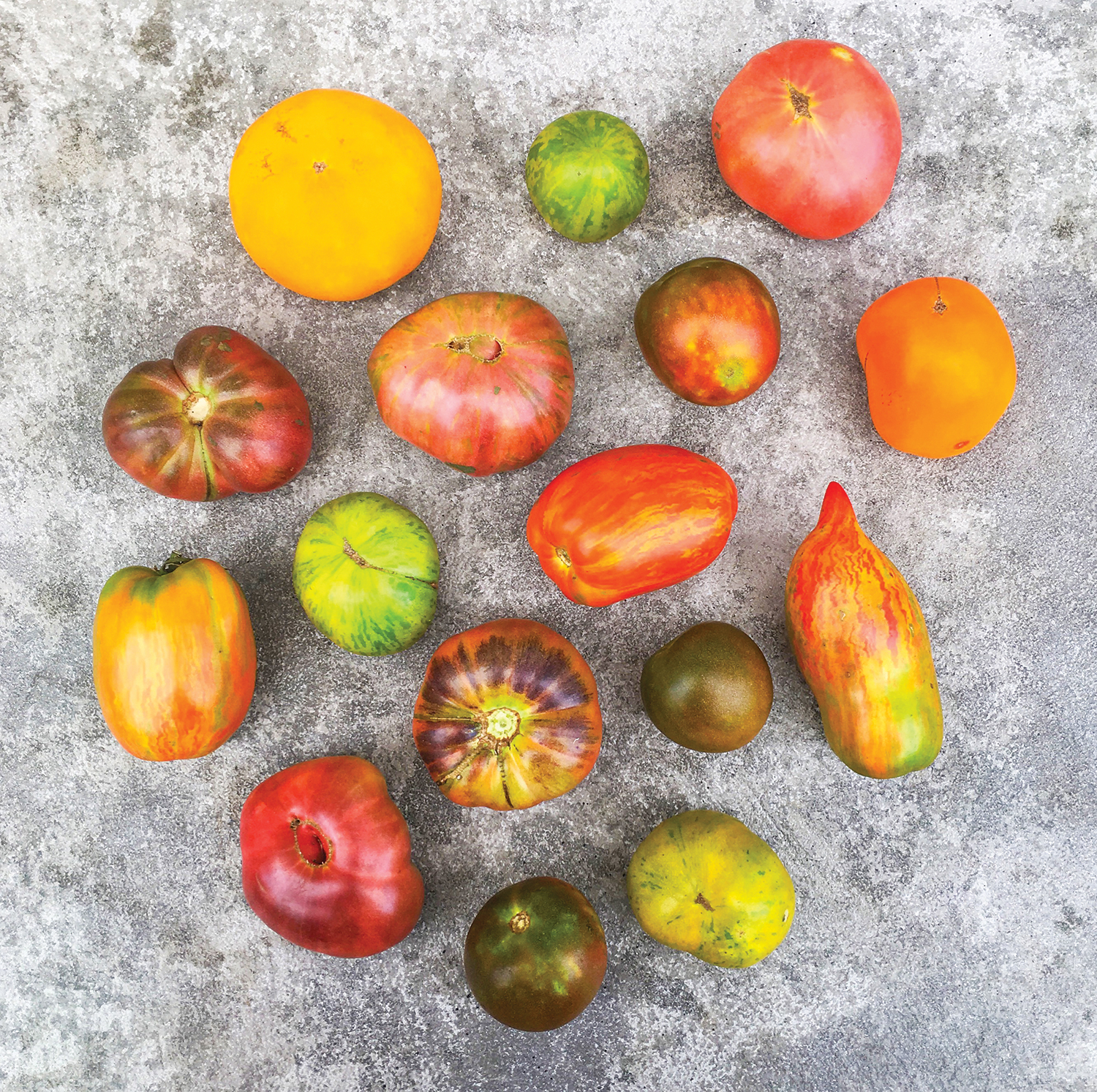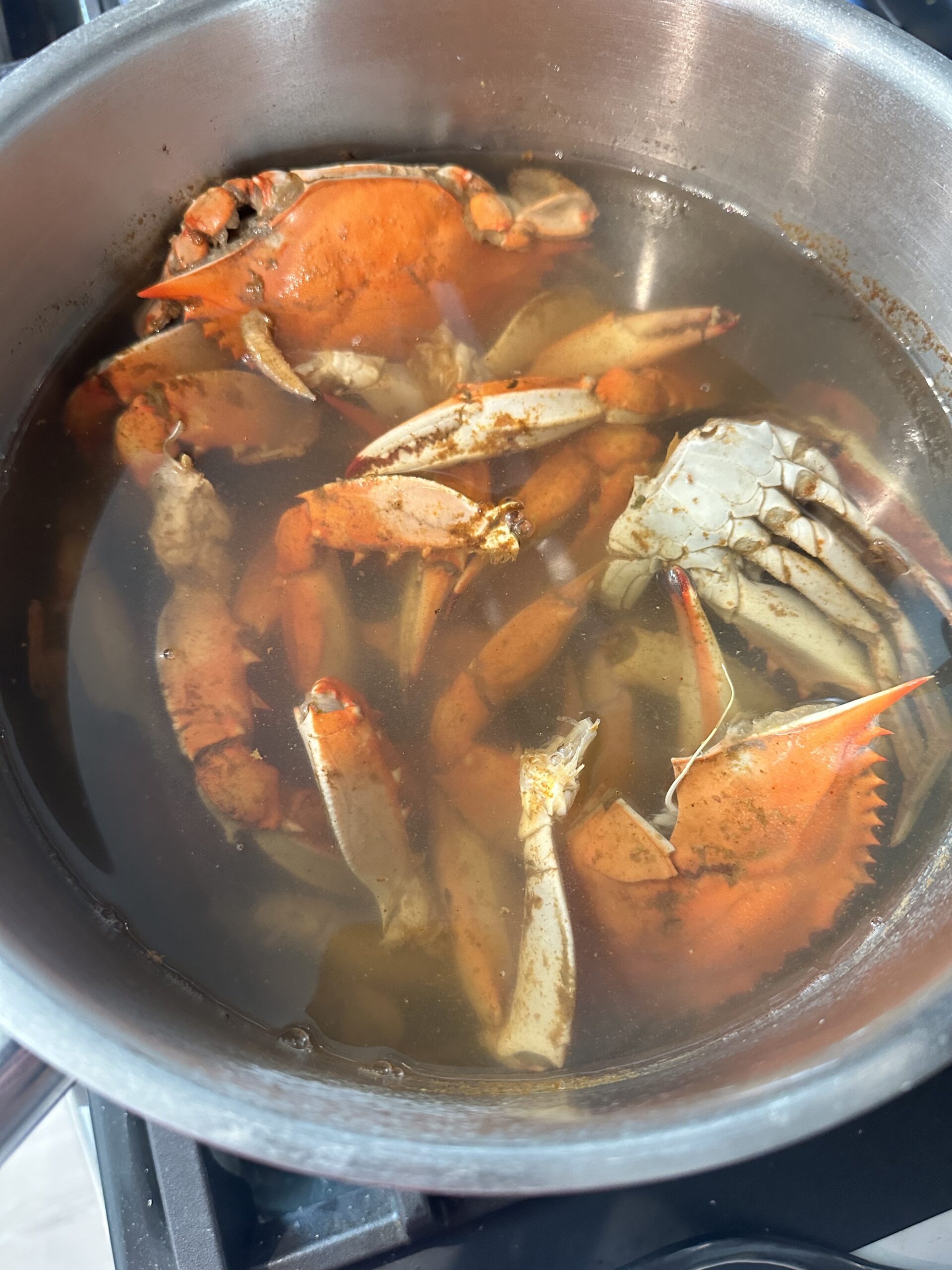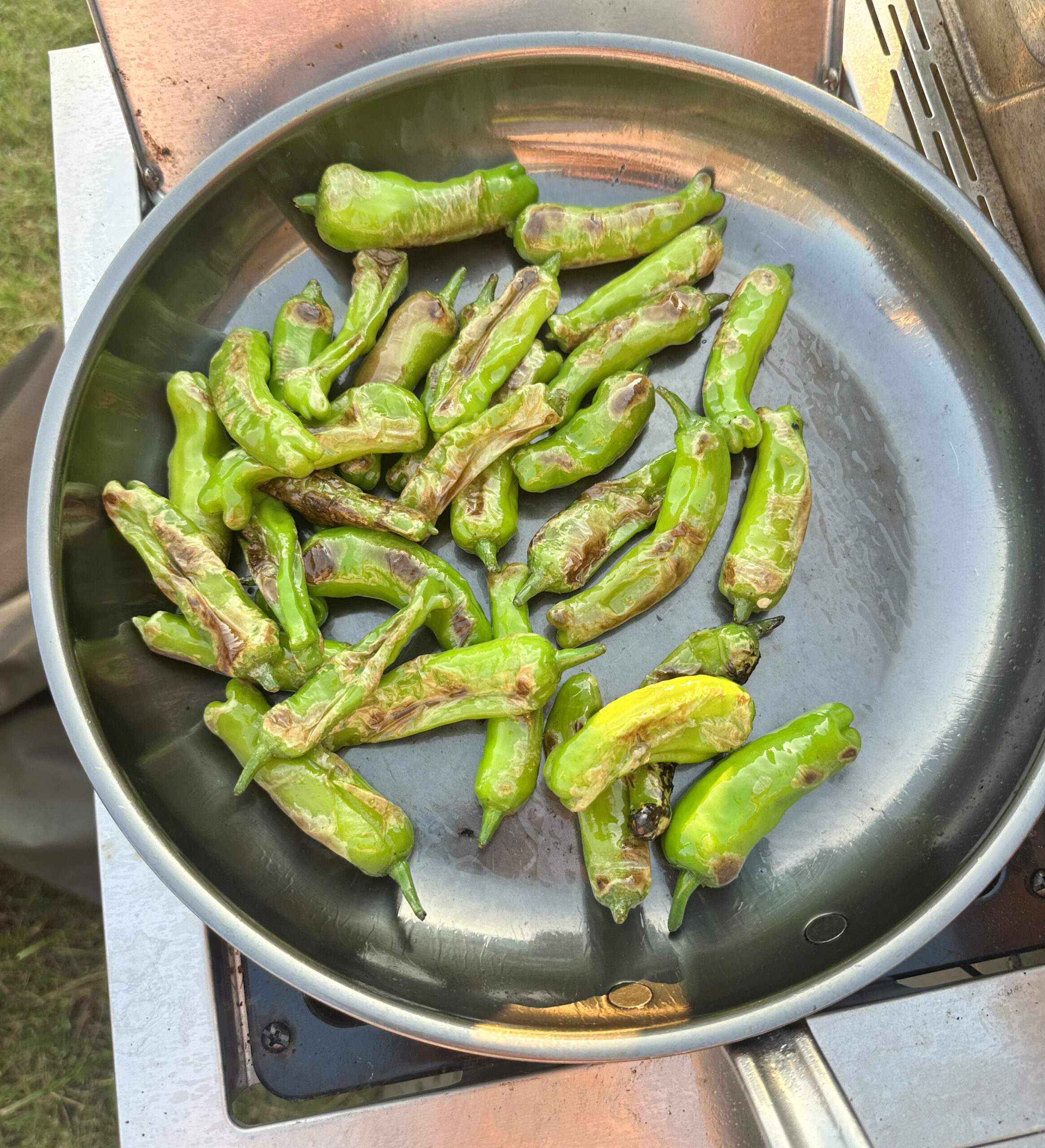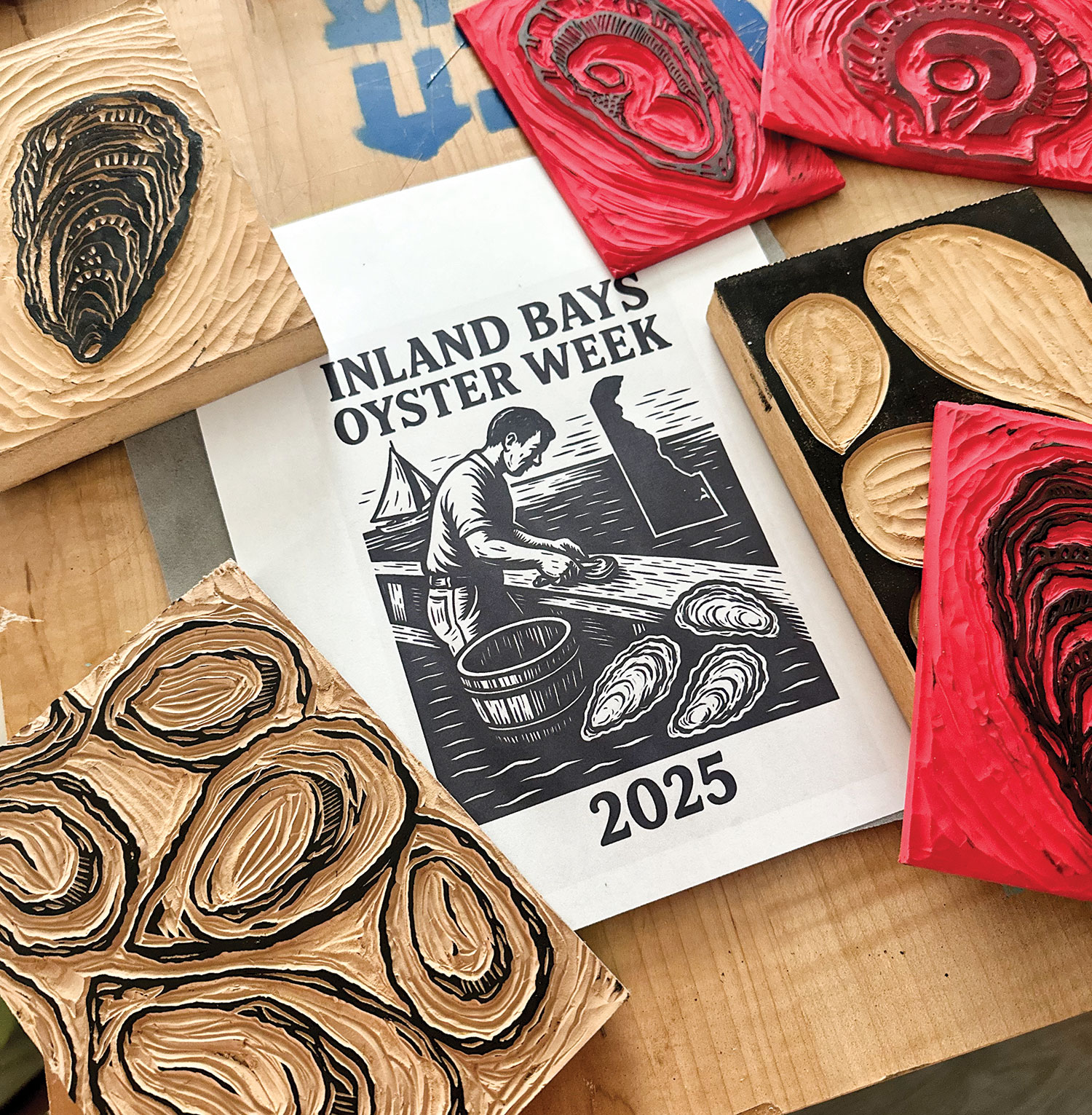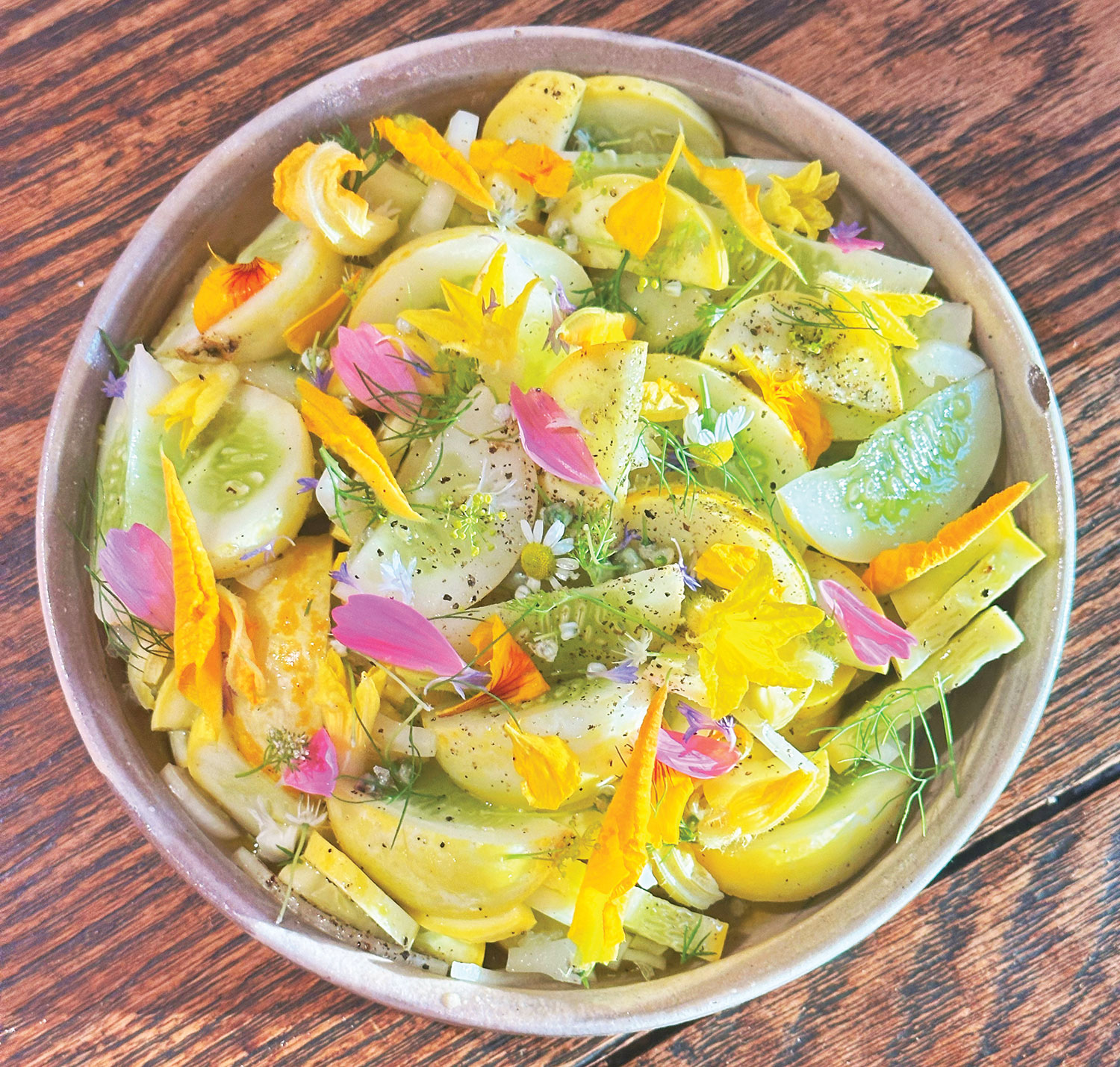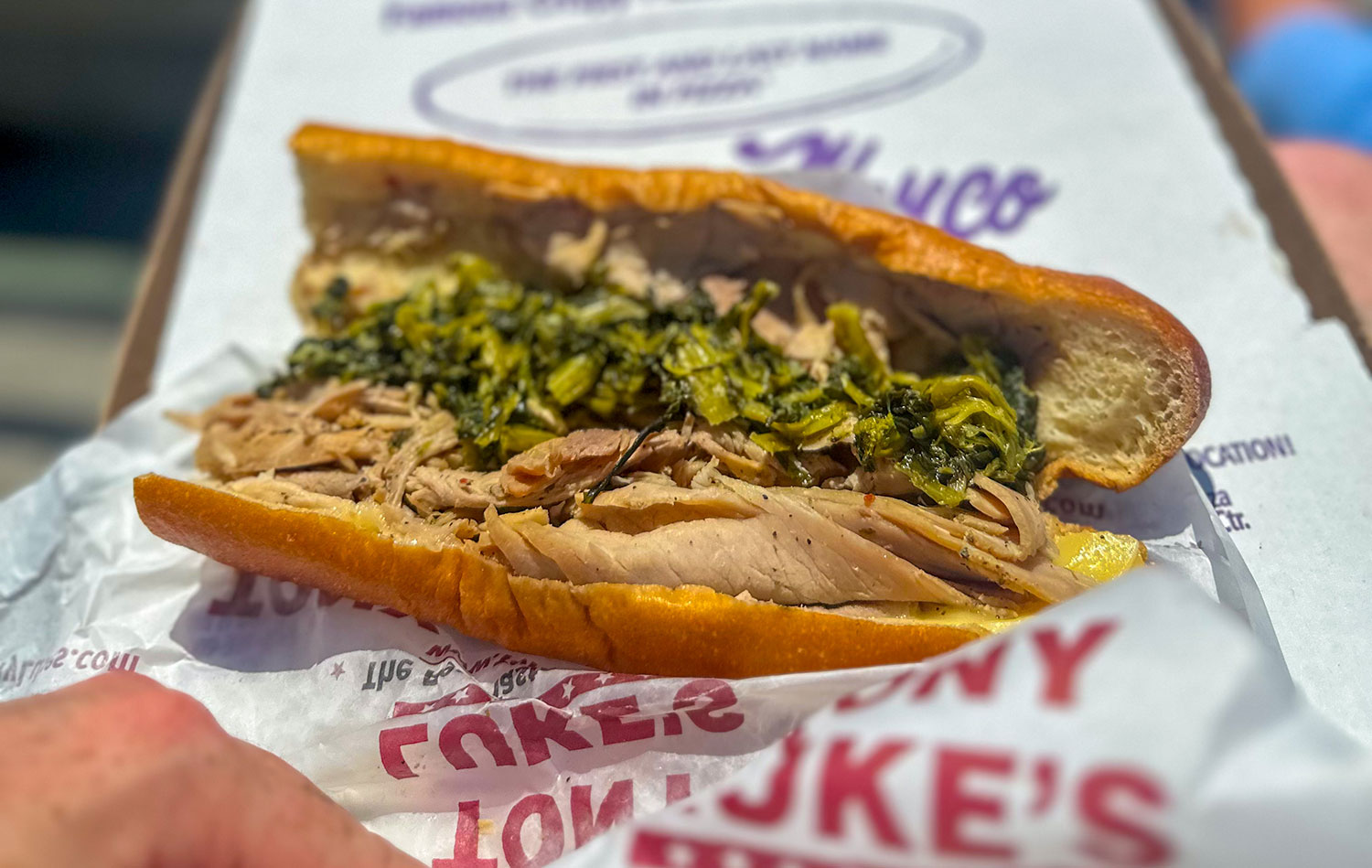Foraging for Flavor
Seasonal foraging has always been a favorite part of my culinary journey. My foraging trips are always an adventure, whether they’re through dense forests or in neighbors’ yards, they allow me to connect deeply with nature and discover unique ingredients that enhance my dishes. Among these, green pinecones, including those from spruce and cedar trees, stand out for their ability to transform into an extraordinary syrup known as mugolio. Each cone type, packed with moisture and essential oils, offers its distinct aroma and flavor profile to the syrup. This syrup has a history as rich as its flavor and dates to ancient times in northern Italy when it was used for both food and medicinal purposes. With its deep, resinous flavor, this elixir is a testament to the magic that happens when nature meets culinary craftsmanship.
A Versatile Ingredient
Mugolio syrup is a versatile ingredient that can transform both sweet and savory dishes. One of my favorite ways to use it is to drizzle it over a scoop of vanilla ice cream, creating a delightful harmony of flavors. The syrup’s piney notes enhance the ice cream’s creaminess, creating a unique and delicious dessert. I also love adding a splash of mugolio to roasted vegetables, which adds a subtle sweetness and complexity, elevating the dish to a new level. The possibilities are endless, and I encourage you to explore the culinary potential of mugolio syrup in your own kitchen.
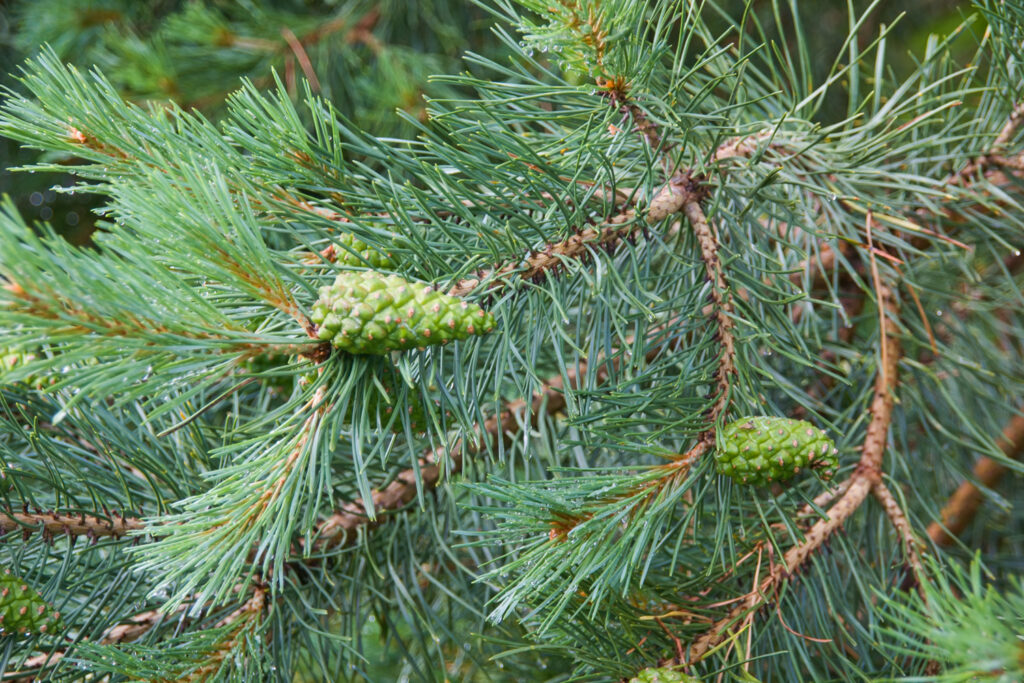
Making Muglolio Syrup
Making mugolio syrup is as fascinating as the product itself. This process begins with selecting the suitable sugar to draw out the essential oils, terpenes, and moisture from the pinecones. I employ different sugars in this method —white sugar, which provides a clean sweetness; light brown sugar, which adds a hint of caramel; and turbinado sugar, which lends a subtle molasses flavor—each imparting unique characteristics to the syrup. I have even started to use local pine honey, which adds a floral note and a deep, rich sweetness that perfectly complements the pinecones’ natural flavors. Once you have the pinecones, this is an easy food to create. I encourage you to embrace the process, experiment with different ingredients, and, most importantly, explore the journey from forest to fork.
Directions:
➊ Gently wash the pinecones to remove dirt or debris. Handling them carefully is essential to preserve their integrity and the oils within.
➋ Layer the pinecones with the chosen sugar in a glass jar, ensuring that each cone is well-coated. The sugar will work as a desiccant, pulling moisture from the pinecones and starting fermentation. The sugar draws out the pinecones’ moisture over several weeks, creating a syrup as the mixture ferments. This is a vital part of the alchemy that allows the flavors to develop, creating a complex and aromatic syrup.
➌ While it is in fermentation, the mixture of the developing syrup is a natural transformation, with the sugars breaking down and the flavors intensifying. Once the syrup reaches the desired consistency and flavor, I strain out the solids and bottle the syrup. The result is mugolio, a beautiful, amber-colored elixir with a sweet and slightly resinous taste. This process can be ready after two or six months to a year. The longer it ages, the more the flavors harmonize and integrate.
Chef Hari Cameron is a renowned culinary expert, consultant and restaurateur. He has received critical acclaim for his modern farm-to-table approach to cooking and has been recognized for his numerous contributions to the hospitality industry. With a passion for using the highest quality Mid-Atlantic ingredients, Chef Cameron has become a leading voice in today’s culinary landscape.

